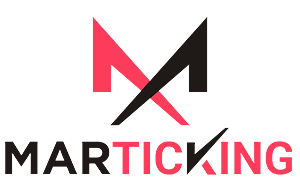How To Monitor A Page’s Content ROI
In today’s digital milieu, where every click, view, and engagement counts, deciphering the intricacies of Return on Investment (ROI) has evolved into a cornerstone of marketing strategies. Among the plethora of metrics vying for attention, the monitoring of a page’s content ROI emerges as a beacon guiding marketers towards optimizing their online presence. This article aims to delve deeper into the realm of content ROI monitoring, offering an expansive exploration of its significance, methodologies, and practical applications.
Significance Of Content ROI
At its essence, content ROI encapsulates the efficacy of a page’s content in yielding desired outcomes vis-à-vis the resources invested. It serves as a litmus test for the success of content marketing endeavors, elucidating the tangible returns derived from content creation and distribution efforts. Understanding and optimizing content ROI is, therefore, indispensable for businesses striving to maximize their digital footprint and drive sustainable growth.
ROI Meaning
ROI, a ubiquitous metric in the realm of business and marketing, represents the ratio of net profit generated to the cost incurred, expressed as a percentage. This fundamental concept underpins the assessment of profitability across diverse ventures, including content marketing initiatives. The ROI formula, succinctly put as:
ROI Calculator:
[ ROI = \frac{(Net Profit – Cost)}{Cost} \times 100\% \]
It serves as a lodestar guiding marketers in evaluating the performance of their content investments.
How To Calculate ROI
The calculation of content ROI entails a meticulous consideration of various metrics intertwined with the overarching objectives of content campaigns. It commences with a delineation of these objectives—whether it be driving sales, enhancing brand awareness, or fostering customer engagement. Subsequently, relevant metrics aligned with these objectives, such as website traffic, conversion rates, and social media engagement, are tracked and measured.
ROI Formula
To compute content ROI, these metrics are integrated into the ROI formula:
\[ ROI = \frac{(Revenue – Cost)}{Cost} \times 100\% \]
Where:
– Revenue signifies the monetary gains attributable to the content.
– Cost encompasses all expenses incurred in content creation and distribution.
Methodologies for Monitoring Content ROI
Google Analytics:
Google Analytics stands as a stalwart ally in the quest for ROI insights, offering a plethora of tools to track website traffic, user behavior, and conversion rates. By configuring goals, funnels, and advanced segments, marketers can glean invaluable insights into how content influences user actions and contributes to revenue generation.
CRM Systems:
Integrating Customer Relationship Management (CRM) systems into the ROI analysis ecosystem enables a holistic view of content’s impact on sales and customer acquisition. By tracing conversions back to specific content interactions, marketers can discern the pivotal role of content in nurturing leads and driving conversions.
Social Media Insights:
Social media platforms harbor a treasure trove of data waiting to be unearthed. Leveraging social media analytics tools, marketers can gauge the efficacy of content campaigns by tracking metrics such as likes, shares, comments, and click-through rates. Correlating these metrics with content investments unveils the social ROI, shedding light on the resonance of content with the target audience.
Attribution Models:
Attribution modeling serves as a compass guiding marketers through the labyrinth of customer touchpoints. By employing sophisticated attribution models, such as first-touch, last-touch, or multi-touch attribution, businesses can accurately attribute revenue to specific content interactions along the customer journey. This nuanced understanding empowers marketers to fine-tune their content strategies and allocate resources judiciously.
Practical Applications of Content ROI Monitoring:
Content Optimization:
Armed with granular insights gleaned from ROI analysis, marketers can embark on a journey of continuous optimization. By iteratively refining content formats, distribution channels, and messaging based on ROI metrics, businesses can amplify the efficacy of their content initiatives and fortify their competitive edge in the digital arena.
Budget Allocation:
Rationalizing budget allocation is a prerogative for marketers seeking to maximize ROI. By identifying high-performing content initiatives and reallocating resources from underperforming endeavors, businesses can optimize their marketing spend and maximize the impact of their investments.
Performance Evaluation:
Content ROI serves as a yardstick for evaluating the performance of content creators, distribution channels, and overarching content strategies. By correlating ROI metrics with individual contributions, marketers can foster accountability, nurture talent, and cultivate a culture of data-driven decision-making within their organizations.
Conclusion:
In conclusion, as we navigate the intricate landscape of digital marketing, the monitoring of a page’s content ROI emerges as a beacon guiding the strategic endeavors of Marticking and businesses alike. By delving into the significance, methodologies, and practical applications of content ROI monitoring, we unravel the true essence of content marketing success. Armed with a deep understanding of ROI calculations, leveraging sophisticated analytics tools, and embracing a culture of continuous optimization, Marticking can maximize the impact of its content initiatives, drive sustainable growth, and fortify its position in the digital arena. Content ROI monitoring transcends mere metrics—it embodies a strategic imperative, empowering Marticking to make informed decisions, allocate resources judiciously, and chart a course towards sustained success in an ever-evolving digital ecosystem.


